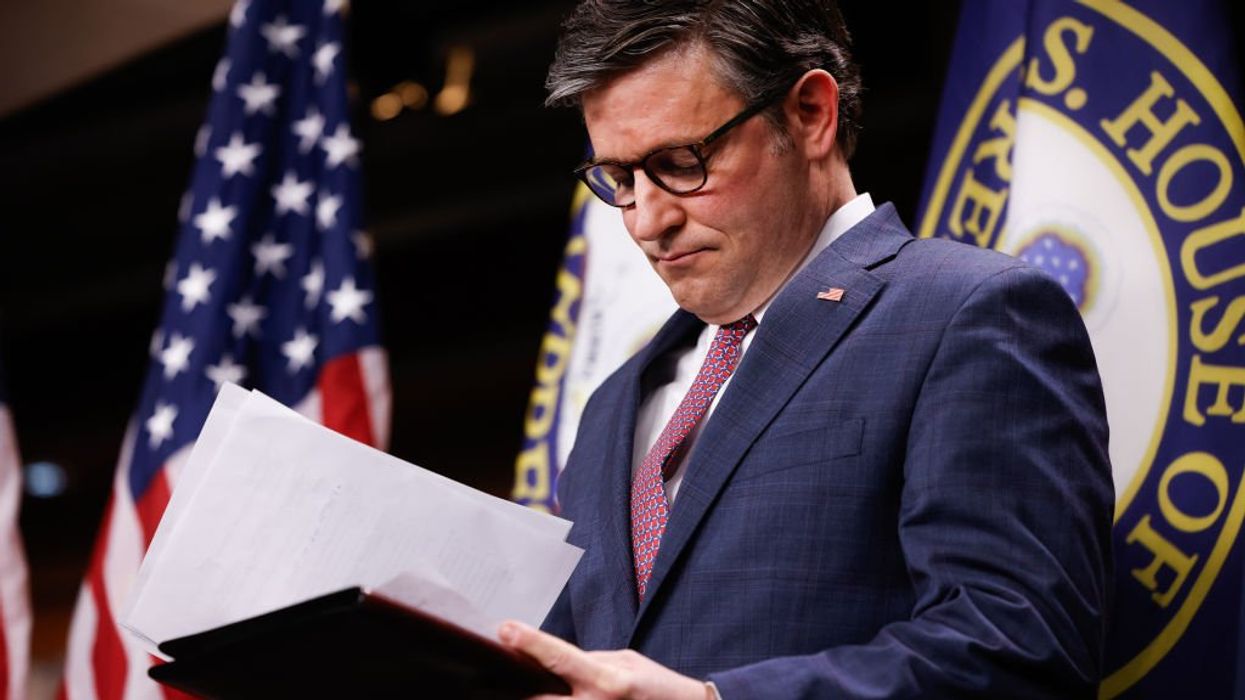Quantitative easing has turned out to be the failed monetary experiment we always knew it would be.
And now it could bring about the next Bear Market.
If you look at it this way, its fanciful stupidity becomes obvious.
 (Photo by Mario Tama/Getty Images)
(Photo by Mario Tama/Getty Images)
Central banks spent trillions of dollars (and yen, and euros, and yuan) based on virtual equity in black-hole balance sheets to buy underwater securities from struggling banks to bail them out.
Then they bought their own government's debts to bail them out. Along the way, they raised asset prices to create a “wealth effect” and lowered interest rates enough to try and stimulate a trickle-down boost to consumer spending, which they then thought might resurrect Keynesian fake perpetual-motion fantasy factories.
Does that sound like a good idea to you? As if that was ever going work.
And of course, it hasn't. Here's the proof:
There's not a single economy in the world where central bank bond and asset purchases were exercised (or are being exercised) that's experiencing decent GDP growth.
Not a single one.
And worse, not only have QE programs not generated inflation (other than market-based financial asset inflation), deflationary pressures are mounting again.
Once-heralded central bank "bazookas" now appear to be smoking, empty pipe dreams.
And that failure is going to have serious consequences…
Then there are the more than $2 trillion worth of stock buybacks in the United States since 2009.
If, as an increasing number of analysts fear, earnings weaken into the fourth quarter and turn negative in 2016, and stocks break support lines, all that financial engineering to boost earnings per share metrics and stock prices will prove to be a total waste of cash and a weight on corporations that borrowed to play the game.
While that's a global and domestic snapshot, we have to watch these two other shoes that are dropping…
There Are Two "Canaries" Set to Choke to Death
I'm talking about China and the already down-in-the-heels emerging markets.
China's growth and the knock-on effects that growth had on emerging markets after the credit crisis and through the Great Recession kept the world from completely imploding.
Now China's GDP growth is slowing, perhaps significantly. Forget China's Ministry of Slick Statistics – the emerging markets taking it on the chin is proof positive that China's real growth rate may be doing a lot worse than just slowing.
China's stock market is just one canary in the coal mine.
You know that miners take a canary with them. If the canary dies, they know the air they're breathing is about to choke them next.
Well, the Shanghai Composite has been boosted higher by the Chinese plunge-protection team. If the Shanghai Composite falls back below the psychologically important 3,000 level, all hell is going to break loose in China.
The government not being able to hold the markets up, after openly saying they were doing just that, will send a chill across global markets that the Chinese Emperor has no clothes.
The yuan will fall, emerging markets currencies will take further hits, and we'll be facing a 1998-style "contagion correction" in the face.
There will be no quarter for the United States if that happens. The dollar will strengthen, putting further pressure on emerging markets currencies, and capital flight from Brazil, Russia, India, China, and South Africa (the “BRICS”) will devastate their economies.
The other canary in the coal mine is the price of oil. The falling price of oil is a bright, loud, and clear statement that global demand is weakening.
If West Texas Intermediate (WTI, the American crude oil benchmark) breaks below $40, makes new lows, and cracks the $30 handle, the United States could see a wave of energy loans defaulting and an upheaval in the leveraged loan and high-yield markets. Banks could go under, too.
Globally, if oil spirals downward, energy companies around the world and oil-producing countries like Malaysia (that converted hundreds of billions of locally denominated debt into dollar-denominated debt because U.S. interest rates were so low and appetite for yield has been so high) will trigger a negative feedback loop that no one knows how to stop.
As oil prices fall and the dollar as a safe haven strengthens, it will take more oil revenue, at lower prices, to service all that dollar-denominated debt.
So, those are the "Horsemen of the Apocalypse" that have the markets running terrified.
Now, here's when we can expect those bogeymen to come riding by…
Hedge Your Portfolio with These Protective Moves
If the Shanghai Composite breaks 3,000, run for cover. It could drop another 30 to 50 percent.
If West Texas Intermediate tests $44 a barrel, can't hold that level and breaks below $40, run for cover; it's going to test $30.
If the Dow Jones Industrial Average can't hold 16,000, it's going to test August lows of 15,370. If the index can't hold there, it could lose another 1,000 points in a matter days.
The S&P 500 just broke its support level of 1,900. If it can't hold August lows of 1,867, run for cover; it's going to 1,820 in a hurry.
The Nasdaq Composite just broke its support of 4,600. If it can't hold soft support at 4,526, it's going to test its August lows of 4,292. If it can't hold there, it's going to 4,100.
You've been warned.
To protect yourself at each of these "support" levels, buy inverse exchange-traded funds like ProShares Short Dow30 (NYSE Arca: DOG), ProShares Short S&P 500 (NYSE Arca: SH), and ProShares Short QQQ (NYSE Arca: PSQ) to hedge your investment portfolios.
It’s time to load up for a bear.
CIA Economist: Next Six Months Will Be Worse Than 2008
Should the rise of conflicts across the Middle East and Ukraine serve as a warning sign that something much more dangerous is approaching? According to Jim Rickards, the CIA's Asymmetric Warfare Advisor, the answer is yes.
–
TheBlaze contributor channel supports an open discourse on a range of views. The opinions expressed in this channel are solely those of each individual author.


 (Photo by Mario Tama/Getty Images)
(Photo by Mario Tama/Getty Images)


